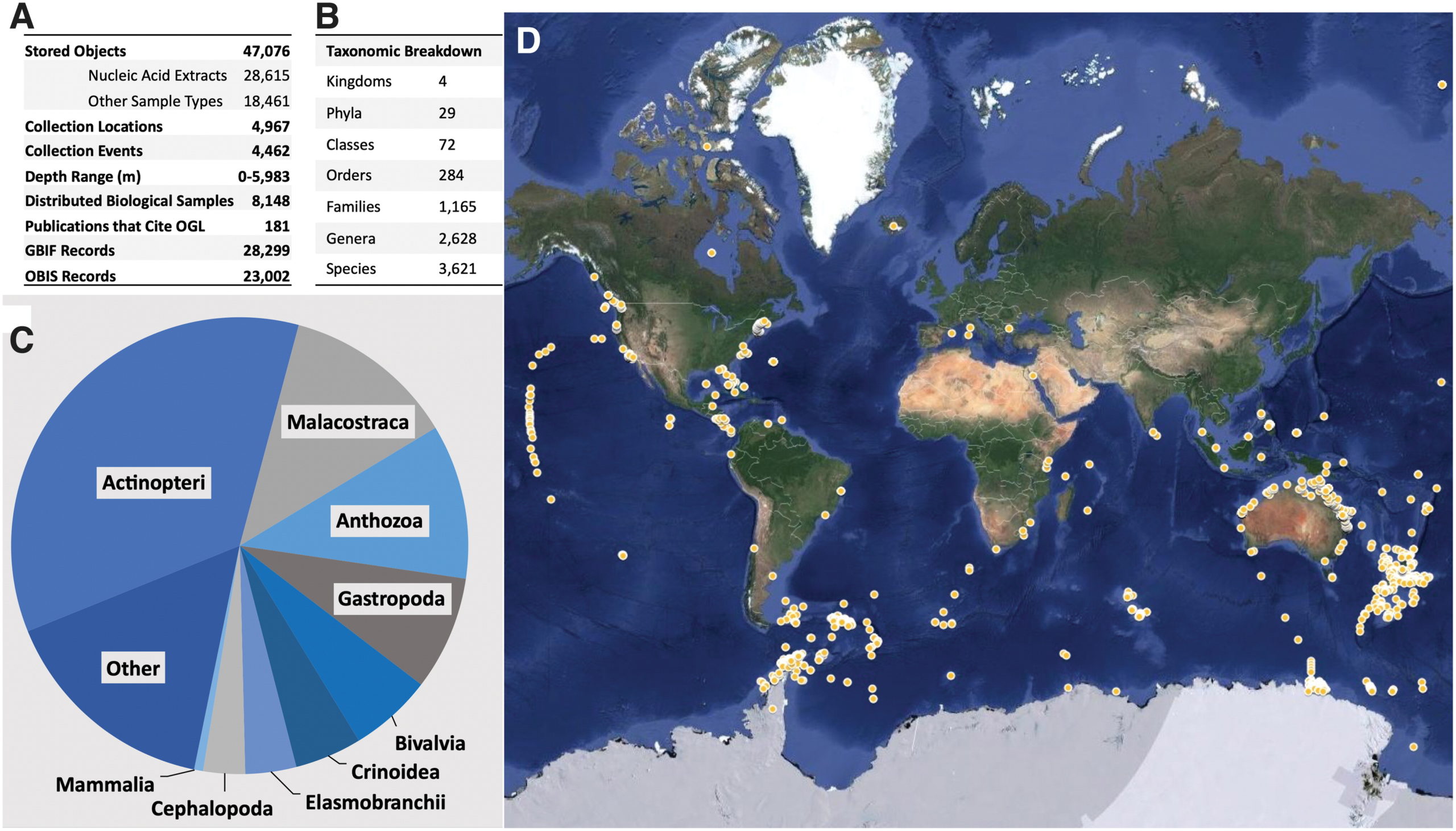Have you ever wondered what goes on at the Ocean Genome Legacy Center? If so, you are not alone.
We frequently receive questions such as: Who can use OGL’s collections? What is in them? Where do the samples come from? How do I contact and work with OGL? To answer these questions and more, we recently published a brief paper in Biobanking and Biopreservation, a leading journal in biorepository science. The manuscript, entitled “The Ocean Genome Legacy: A Genomic Resource Repository for Marine Life,” describes our mission, collection, policies, and some of the ways we serve our constituents.
So, if you want to learn more about the inner workings of OGL, read the manuscript online here or download the manuscript here.

The Ocean Genome Legacy in a nutshell. (A) Description of OGL holdings and products, including distributed biological materials and data. (B) Taxonomic ranks represented by stored objects held in the OGL collection. (C) Proportion of stored objects in the OGL collection by class. (D) Map displaying collection locations associated with stored objects held in the OGL collection. All data reflect the collection as of October 22, 2021. GBIF, Global Biodiversity Information Facility; OBIS, Ocean Biodiversity Information System; OGL, Ocean Genome Legacy.
Interested in the work happening at OGL? Support OGL here.
